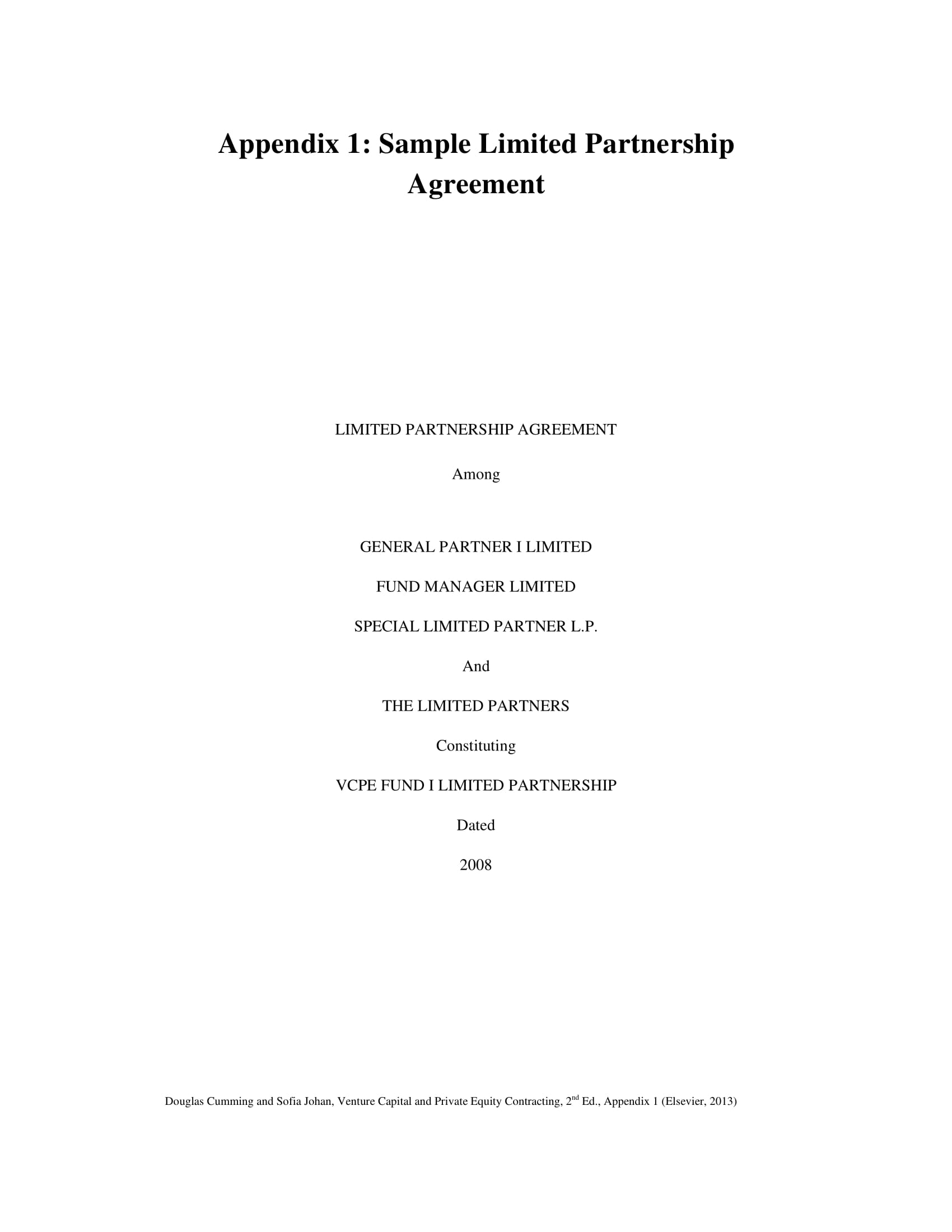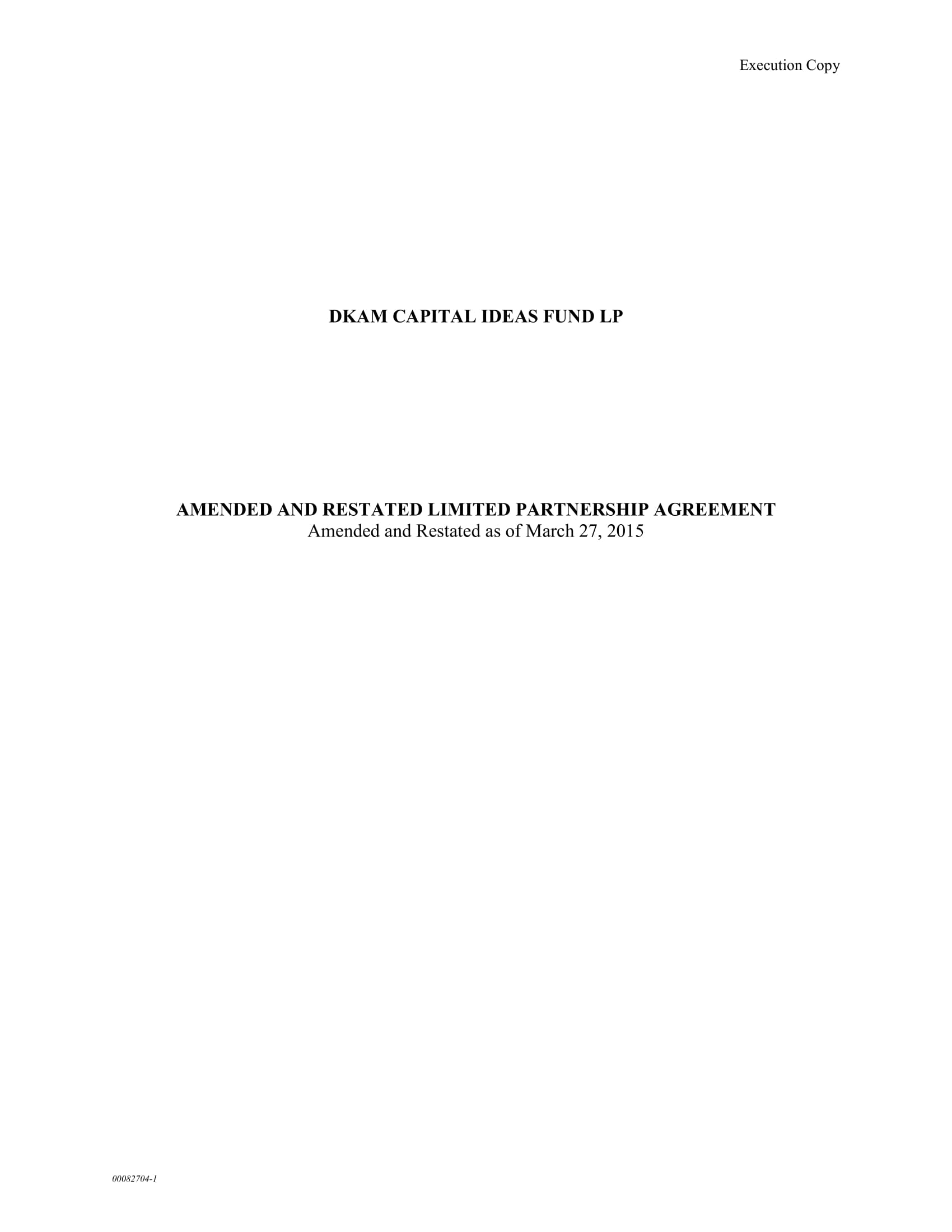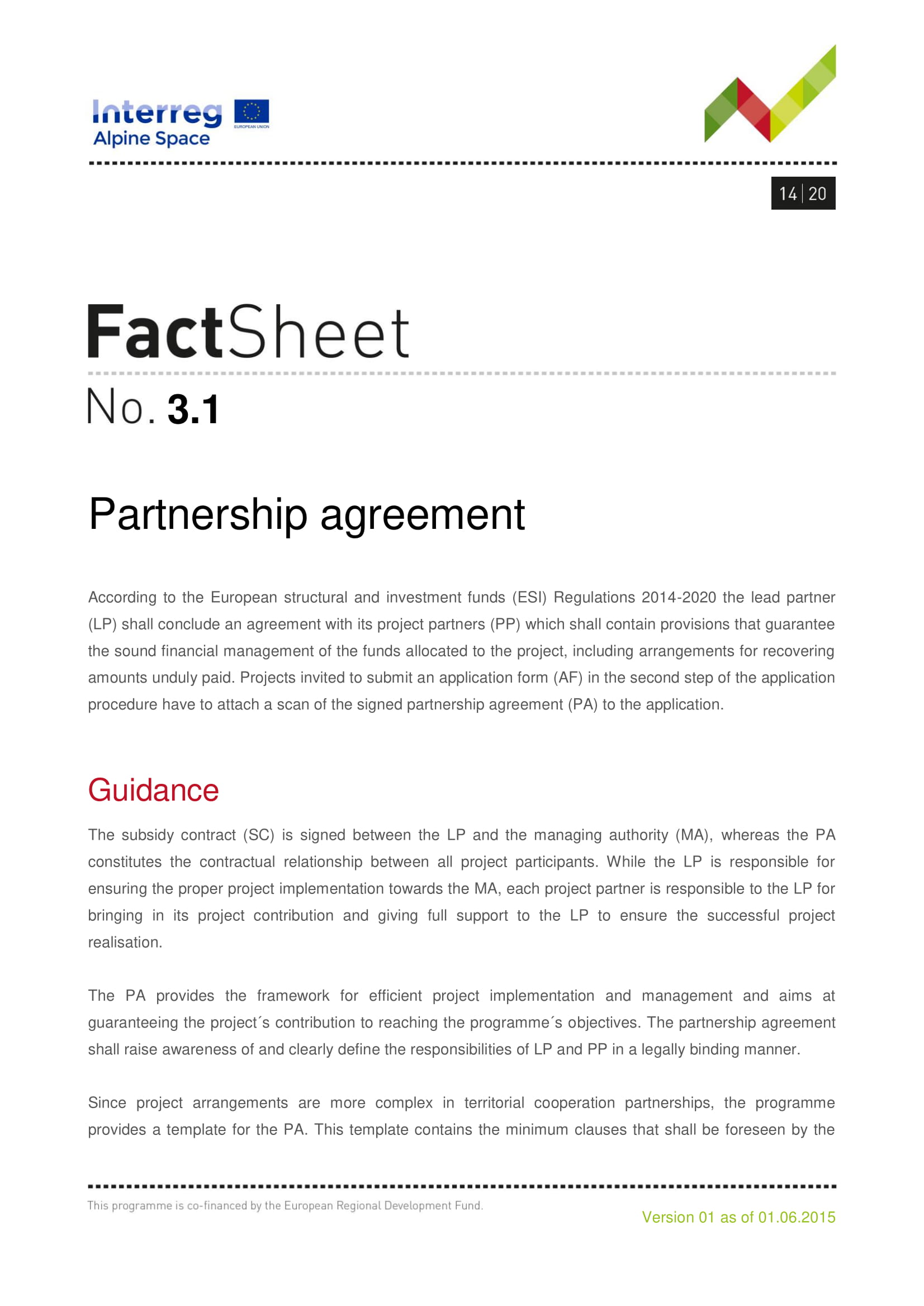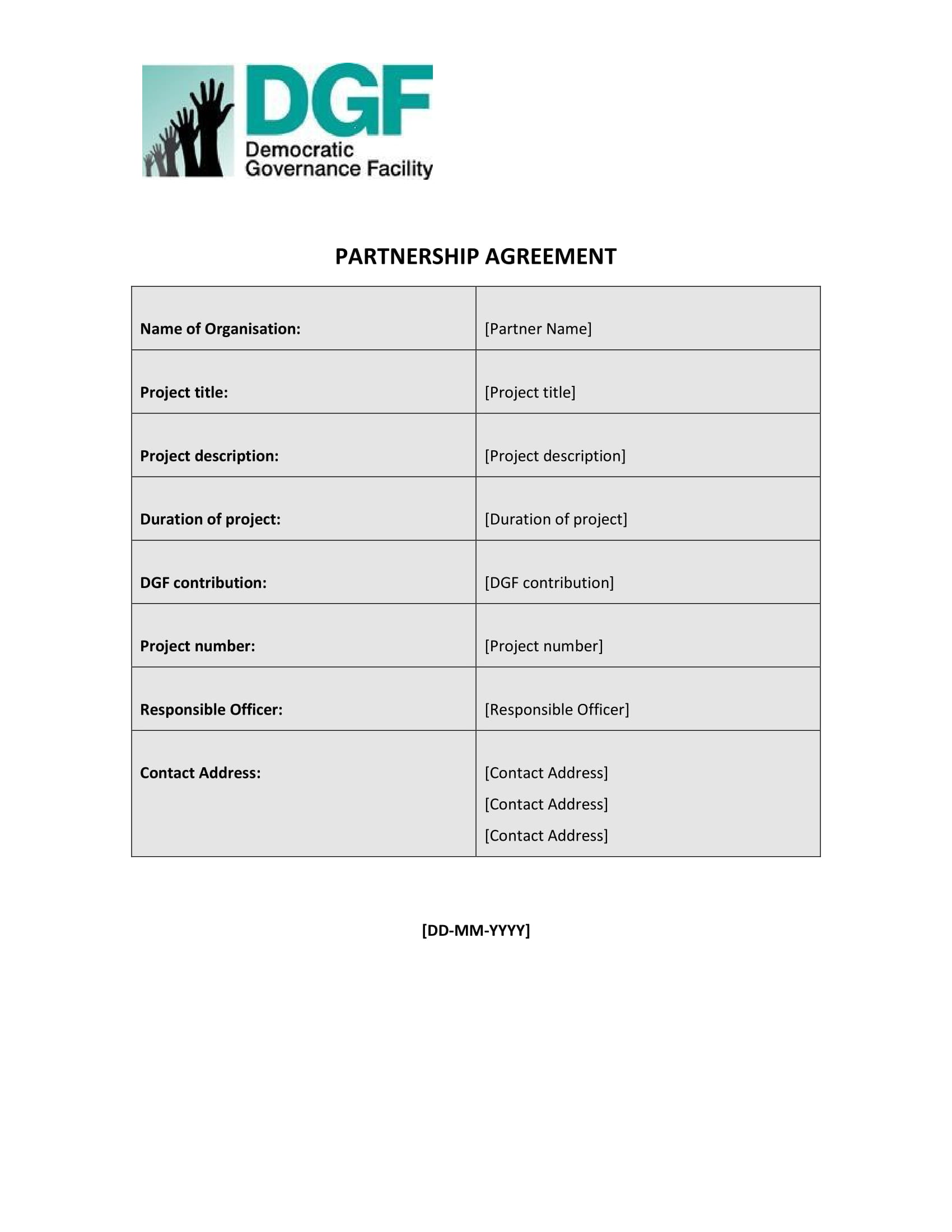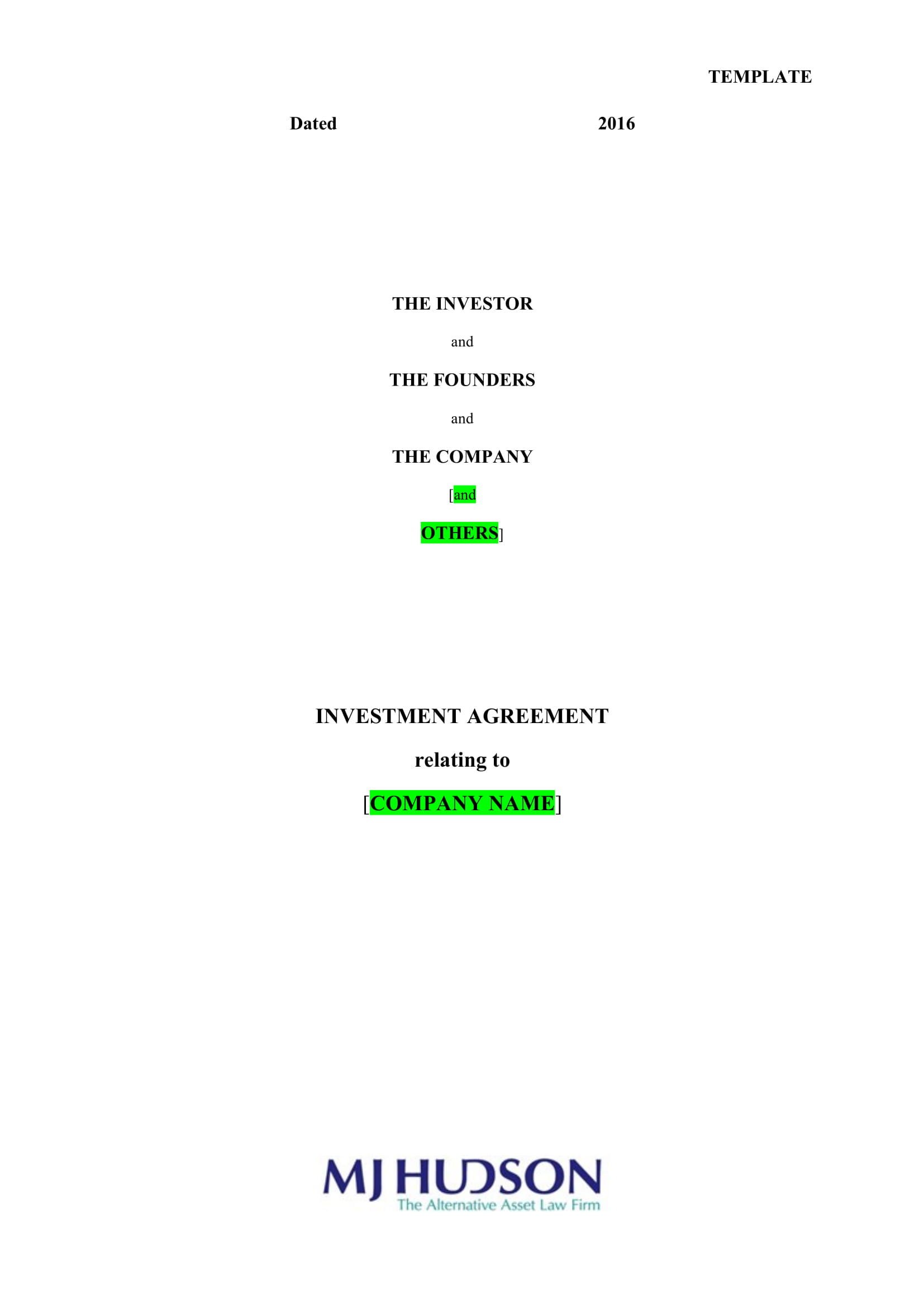8+ Partnership Investment Agreement Examples
In establishing a business, commonly, people would prefer to have someone who can work with them in running the business through contributing money, property, or industry to start the business and to run the business. You may also see management agreement examples.
To do so, many engage in a business structure called partnership where partners bind themselves through a simple agreement to contribute the said assets of the entity with the intention of dividing the profits among themselves.
In the general agreement, they must state their ratio in their division of profits and losses, bonus, salary, among others. The partners must also participate in the decision-making with regard to anything related to running of the business. More on these discussions are presented in the succeeding sections of this article.
Here are the examples of partnership investment agreement that might help you when you are to draft your agreement.
Real Estate Partnership Agreement Example

Comprehensive Partnership Investment Agreement Example
Detailed Partnership Investment Agreement Example
Partnership Defined
A partnership is a business structure or arrangement whereby the partners, the parties involved in a partnership, agree to contribute money, property, or industry to a common interest with the intention of dividing the profits among themselves. When we say partners, this need not be persons, but it can also be corporations, cooperatives, interest-based organization, schools, or government institutions. You may also see stock agreement examples.
Characteristics of a Partnership
There are several characteristics of partnerships that you must know before entering such agreement. You must know these characteristics in order for you to fully understand how a partnership operates. The characteristics of a partnership are as follows:
1. Mutual contribution
In a partnership, there must be contribution of money, property, or industry to start the business. A partner need not to contribute all; instead, he can contribute asset only or industry only such as those work or services that require personal or intellectual efforts. You may also like management services agreement examples.
2. Division of profits or losses
The definition of partnership itself states that the purpose of such agreement between the partners is to divide the profits among themselves.
How will the profits and losses be divided? Firstly, it must be divided according to the basic agreement of the partners. In the essence that there is no agreement with regard to division of profits and losses, it must be divided according to their contributed capital for the capitalist partners and a just and equitable share for the industrial partners.
3. Co-ownership of contributed assets
All the assets that are contributed into the partnership are owned by the partnership as partnership is considered to have a separate and distinct juridical personality from its owners.
4. Mutual agency
Any partner of the partnership is allowed to bind the other partners to a certain general contract that he is entering into if he is acting within his express or implied authority. This means that the other partners will be held responsible for the contract entered into by the other partner if that partner has the authority to enter into the contract for the partnership.
5. Limited life
Another characteristic of a partnership is that it has a limited life, and it can be dissolved by the admission, death, insolvency, incapacity, withdrawal of a partner, or expiration of the term specified in the partnership agreement. Hence, you must carefully decide on the term of the partnership in your agreement.
6. Unlimited liability
All the partners in a partnership except the limited partners (the kinds of partners will be discussed below), including industrial partners, are liable for all debts incurred by the partnership up to their personal assets. In case when the partnership does not have the capacity to settle their obligations, they must use their personal assets without prejudice to the rights of the separate creditors of the partners. You may also check out consulting agreement examples.
7. Income taxes
All partnerships are subject to tax at a rate of 34% (in 1998), 33% (in 1999), and 32% (in 2000 and thereafter) of taxable income, except general professional partnerships.
8. Partners’ equity accounts
In accounting for partnership, in the equity section of the its balance sheet, it has a capital account that contains the outstanding capital of each partner and a withdrawal account that contains the amount of withdrawal of each partner for a certain month in which the balance sheet is prepared. You might be interested in shareholders agreement examples.
DKAM Capital Ideas Limited Partnership Agreement Example
Fact Sheet Partnership Agreement Example
Generic Partnership Agreement Example
Types of Partnerships
There are different types of partnerships according to the different categories. They are classified as follows:
1. According to Object
- Universal partnership of all present property. In this type of partnership, the partners contribute all the property currently belonging to them to a common fund, with the intention of dividing the same among themselves. The contributions made by the partners become part of the partnership fund. You may also see mutual confidentiality agreement examples.
- Universal partnership of profits. All that the partners may acquire by their industry during the existence of the partnership and the partners’ contributions at the time of the institution of the contract belong to the partnership.
- Particular partnership. In this type of partnership, the object of the partnership, its use or fruit, specific undertaking, or the exercise of a profession is determinate. You may also like stock sale agreement examples.
2. According to Liability
- General partnership. In this type of partnership, all the partners are liable to the extent of their separate properties other than those they have contributed to the partnership.
- Limited partnership. In this partnership, there is the so-called limited partners who are liable only to the extent of their personal contributions and not on their personal assets. There must be at least one general partner in this type of partnership. You may also see real estate partnership agreement examples.
3. According to Duration
- Partnership with a fixed term. In this partnership, a fixed term is included in the simple partnership agreement.
- Partnership at will. As opposed to partnership with a fixed term, this partnership has no term specified and is not formed for any particular undertaking.
4. According to Purpose
- Commercial or trading partnership. This partnership is formed for the transaction of business.
- Professional or non-trading partnership. On the other hand, this partnership is formed for the exercise of profession. You may also like lease agreement examples.
5. According to Legality of Existence
- De jure partnership. A partnership that has complied with all the legal requirements for its establishment.
- De facto partnership. A partnership that has failed to comply with all the legal requirements for its establishment. You may also check out subscription agreement examples.
Kinds of Partners
1. General partner.
This partner is liable to the extent of his personal property after all the assets of the partnership are exhausted. You may also see joint venture agreement.
2. Limited partner.
This partner is liable only to the extent of his capital contribution.
3. Capitalist partner.
This partner who contributes money or property to the partnership.
4. Industrial partner.
This partner contributes his intellect or service to the partnership.
5. Managing partner.
This partner has been appointed as the manager of the partnership.
6. Liquidating partner.
This partner is the one designated to wind up or settle the affairs of the partnership after dissolution. You may also like loan agreement examples.
7. Dormant partner.
This partner does not take active part in the business of the partnership and is not known as a partner.
8. Silent partner.
This partner does not take active part in the business of the partnership though may be known as a partner.
9. Secret partner.
This partner takes active part in the business but is not known to be a partner by outside parties. You may also check out commercial agreement examples.
10. Nominal partner.
A person who is actually not a partner but who represents himself as one. He is also called partner by estoppel.
Content of a Partnership Investment Agreement
A general partnership agreement must contain the rules and agreement sets out for the business and its
partners. Usually, it covers the following aspects:
- The trading name of the business
- The full names of all the partners
- The date when the partnership commences
- The nature of the business
- The address of the business
- The initial amount of capital invested in the business by each partner. You may also see professional services agreement examples.
- The percentage of the business that each partner owns
- The contribution of each partner or what each partner brings to the business
- The role that each partner will play in the business and whether they will work full or part-time
- Decision-making and voting rights
- The action to take if the partners cannot agree
- Profit sharing or how the profits will be shared
- Instances when the partners can withdraw this money and any reinvestment back into the business
- Drawings and expenses or the amount of money each partner can withdraw from the business and the limit on the amount of expenses that can be claimed by each partner. You may also like credit agreement examples.
- Liability sharing or the percentage or ratio that each partner will be responsible for
- Bank account and account management such as the name and address of the bank and any terms related to managing the account of the partnership
- The date to which the partnership’s annual account will be prepared, the date when they will be completed, and who will manage such account. You may also check out transfer agreement examples.
- The number of days each partner can take off or leave credits while receiving full pay
- Other leave such as sickness and maternity or paternity leave
- The admission of new partners, the terms and conditions for partners joining, their amount of investment, and their rights and benefits for entering into the partnership
- The retirement package for the partner leaving, how the business will continue to be run, how will the remaining capital be allocated to the remaining partners, and how will it affect the profit sharing of the remaining partners. You might be interested in maintenance agreement examples.
- The terms regarding the dissolution and how the business will be split between the partners in case of dissolution.
- How is the share of a partner be split in case a partner dies
- The type of employment a partner can go into if they leave the partnership in terms of not being in direct competition with the same industry as the partnership. You may also see assignment agreement examples.
- The circumstances when a partner can be expelled and his payout
Limited Partnership Agreement Example
Partnership Investment Agreement Template Example
Professional Partnershhp Agreement Example
Final Points
Partnership is established when two people consented to form a partnership and contribute money, property, or industry in their start-up with the intention of dividing the profits. A formal agreement must be established so that the contract of partnership will be valid and binding and enforceable by law.
Partnerships can be categorized according to object, liability, duration, purpose, and legality of existence. The partners in a partnership can also be classified as general partner, limited partner, capitalist partner, industrial partner, managing partner, liquidating partner, dormant partner, silent partner, and nominal partner. You may also like dissolution agreement examples.
In a partnership investment agreement, it must cover the following: name of the partnership, name of the partners, commencement of the partnership, nature of the business, business location, investment, ownership, distribution, role of partners, voting rights, profit sharing, drawing and expenses, liability sharing, account management, incapability of partners, new partners, retirement, dissolution, death, unfair competition, expulsion, among others. You may also check out business agreement examples.
The standard agreement must be written and presented well without any ambiguity to prevent confusion and misunderstanding among the parties. It must be organized and systematized just as those examples presented above.



